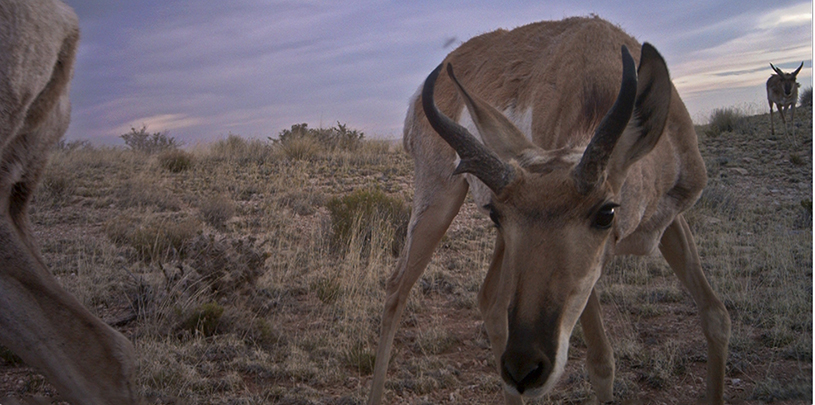
 by Claire Martini, UPLIFT and Youth Engagement Coordinator, AmeriCorps
by Claire Martini, UPLIFT and Youth Engagement Coordinator, AmeriCorps
Topping out at 55 miles-per-hour, pronghorn are second only to cheetahs as the world’s fastest land animals. But they don’t jump—not because they can’t, but because they don’t know how.
For eons, pronghorn never had to jump over anything taller than sagebrush. Now, thousands of miles of fences sprawl across the West, and unless the animals can crawl beneath the barbed wire, the fences literally stop pronghorn in their tracks.
This spring, Northern Arizona University students helped the Trust modify fences in the House Rock Valley to improve habitat connectivity for pronghorn.
By replacing the bottom strand of barbed wire with smooth wire and raising it to 18 inches off the ground, pronghorn can squeeze underneath fences to reach vital water sources across the valley.
With work gloves, rolls of wire, and fencing pliers, we set to work making the fences more wildlife-friendly.

Modifying fences is slow work—one day, 17 workers, and about 150 person-hours later, we’d fixed up just two-thirds of a mile of fence. Since 2006, Grand Canyon Trust volunteers have helped make almost 10 miles of fences pronghorn-friendly.
But great instincts are one of several reasons pronghorn have survived so long after their Pleistocene counterparts like wooly mammoths and ground sloths became extinct. So far, anecdotal evidence suggests that pronghorn find these modified areas and use them for habitat migration. Hoofprints, scurry marks, and hairs caught on the bottom wire show you where they’ve passed through, so next time you’re out walking a modified fenceline, look out for pronghorn crossings!
The federal government will determine if the charismatic blue bird should be listed as threatened or endangered.
Read MoreWe can’t wait to meet you in a canyon, along a creek, or in the high alpine meadows of the Colorado Plateau.
Read MorePronghorn and barbed wire fences don't mix, but volunteers are working to change that, one wire at a time.
Read More